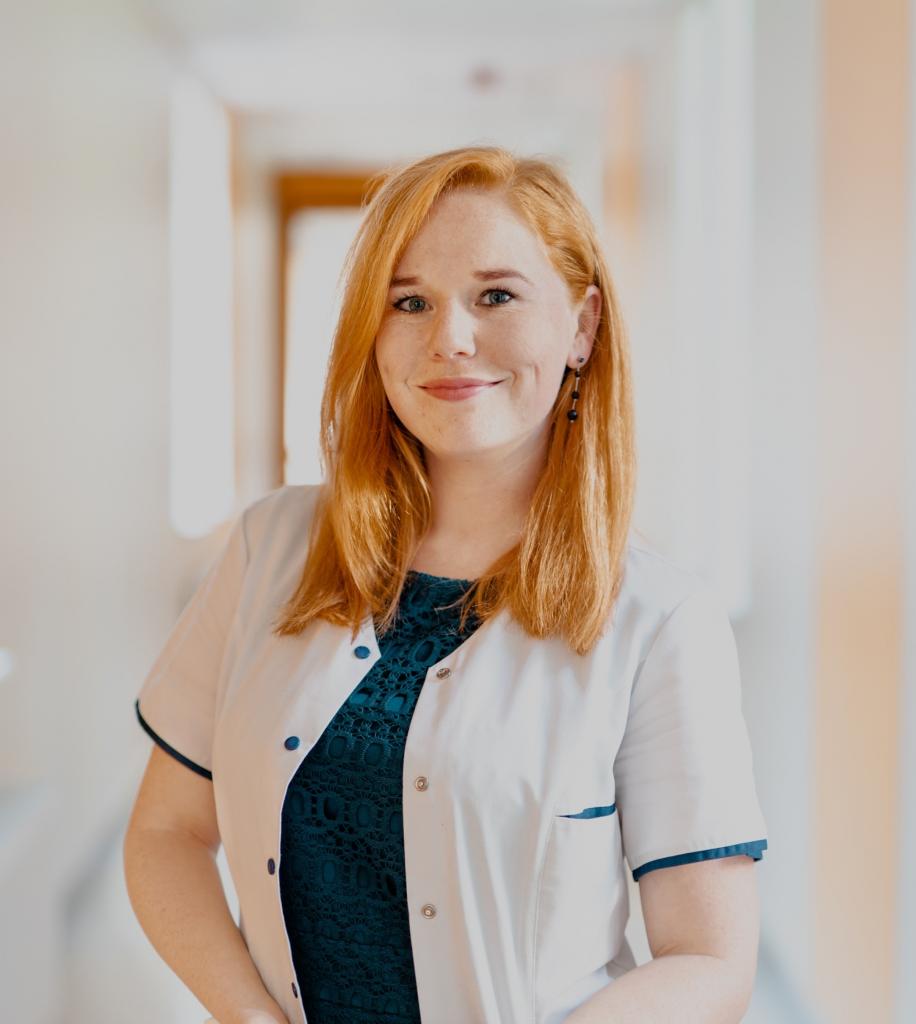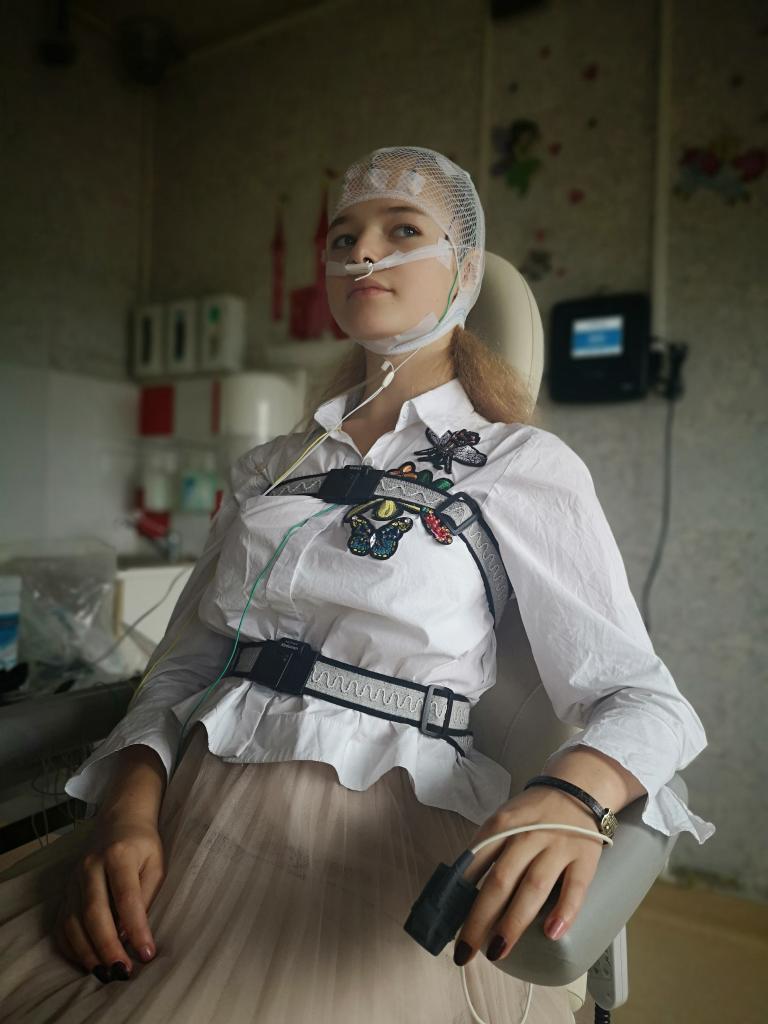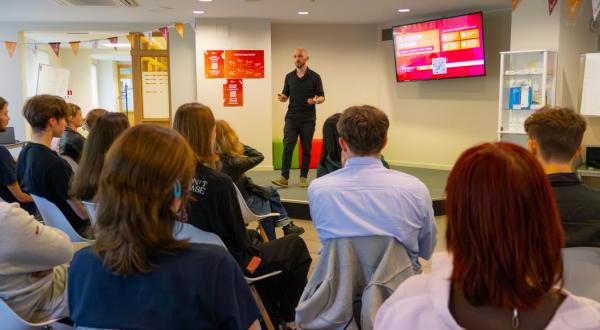The Risk of Falling Asleep at Inappropriate Times! Looking at Narcolepsy as a Sleeping Disorder
In order to increase doctors’, medical specialists’ and students’ knowledge of rare diseases and their treatment in Latvia, the 11th Latvian Conference on Rare Diseases is taking place on October 22, organised by the Latvian Alliance for Rare Diseases and Rīga Stradiņš University (RSU).
Everyone has heard of sleeping disorders. Marta Celmiņa, a pediatrician and sleep specialist from the Epilepsy and Sleep Medicine Centre of the Children's Clinical University Hospital, diagnoses, researches and treats these disorders on a daily basis. At the conference, she will be addressing narcolepsy. Celmiņa is a member of the board of the Latvian Sleep Medicine Association and has worked as a lecturer at the RSU Department of Paediatrics.
‘The conference will present the diversity of rare diseases and our doctors’ successes in diagnostics and treatment. Even if a disease is included on the list of rare diseases, this does not necessarily mean that it is very uncommon. It is therefore important that RSU is involved in organising the conference and is thus making a significant contribution to the recognition, research and treatment of various diseases,’ says Celmiņa.

Marta Celmiņa
Narcolepsy is not the same as narcology!
It can be said of a colleague who tends to fall asleep regularly at work or at meetings that they just need to go to bed on time instead of partying. But is this really the reason? It is possible that this colleague has narcolepsy.
International research shows that the disease affects about one in 2,000 people, which in Latvia means that it could affect up to 900 citizens.
The figure is difficult to specify numbers with precision, because only about 10 percent of cases are detected.
Celmiņa has observed that not only the majority of society, but also some doctors are unaware of narcolepsy. A doctor once referred a narcolepsy patient to a narcologist. Both words start with “narco”, after all! However, a narcologist will not be able to help, because it is a neurological disease that makes a person feel sleepy all the time.
For comparison, the sleep specialist explains that a healthy person would feel the way a narcoleptic does if they had not slept for three days.
Patients feels sleepy most of the time. They can fall asleep even in the most inappropriate situations – not only on public transport, but even during conversations, at lunch or at any time when it gets a little more boring.
Another typical symptom of narcolepsy is cataplexy, which means that emotions, most often positive, can lead to a sudden loss of muscle tone.
The reason is the hormone that regulates sleep and wakefulness
The most common cause of the disease is a deficiency of the hormone orexin. The hormone’s function is to help regulate wakefulness and sleep. For example, our muscles are usually paralysed when we dream. According to Celmiņa this is so that when we dream about fighting a dragon, we don’t actively start fighting in our bed. A patient with narcolepsy can sometimes not wake up from a dream fully – the consciousness is clear, but the paralysis characteristic of sleep still persists. The disease is also characterised by hallucinations, so it is important for doctors to recognize this rare disease and to understand that not all cases of hallucinations are caused by a serious mental illness. Celmiņa further explains that sleep paralysis and hallucinations can coincide, which can be really frightening for the patient to experience.
How can narcolepsy be recognised?
The sleep specialist says that the first sign is drowsiness, but this can have a variety of causes. GPs also are not always able to recognise the disease, and explain the patient’s drowsiness with stress or an intense day at work. International research shows that it often takes decades for the disease to be detected everywhere in the world.
Anyone who complains of drowsiness should also be asked questions about the symptoms of narcolepsy. If there are suspicions that a patient might have this disease, a special examination is performed at a sleep laboratory – a polysomnography and a multiple sleep latency test (see image).

Can narcolepsy be cured?
Since we know that the cause of the disease is mostly a deficiency of orexin, a successful treatment could be to administer this hormone. Unfortunately, science has not yet discovered how to deliver it to the brain, so treatments today are based on reducing symptoms using a variety of medications.
The sleep specialist explains that it is also very important for patients to be able to adapt to their illness. Examples include taking scheduled midday naps, taking up sports, which reduces cataplexy, making sure not to travel alone on long-distance public transport or asking the driver to warn them when a specific stop is coming up and being generally cautious.
How can the quality sleep be proven?
To emphasise the importance of sleep, Celmiņa speaks about a two-week study in which some participants were allowed to sleep for eight hours a day, some for six hours, and others only for four hours. A fourth group was not allowed to sleep for the last three days of the study. After that, all the participants had to solve various puzzles. Of course, those who slept more performed these tasks better, but interestingly, those who slept less and whose solving abilities were worse did not realise it and believed that everything was fine. This shows that people often don’t realise how much lack of sleep affects their ability to work and the quality of their performance on a daily basis.
Getting good sleep is not only a prerequisite for a successful working day, but also for the quality of life in general. Celmiņa stresses how important it is to visit a sleep specialist in good time if a sleep disorder is observed.
Related news
 Develop your business skills and bring ideas to life with the B-Space incubation programmeFor RSU Employees, For High School Students, For Students, Innovation
Develop your business skills and bring ideas to life with the B-Space incubation programmeFor RSU Employees, For High School Students, For Students, Innovation


